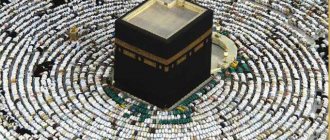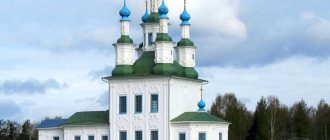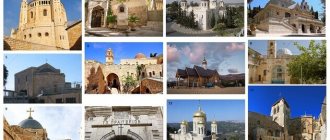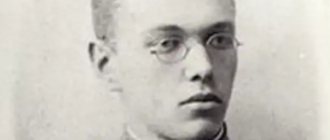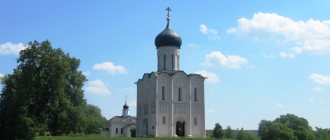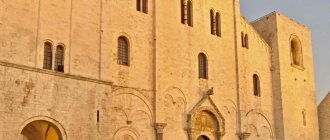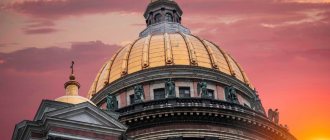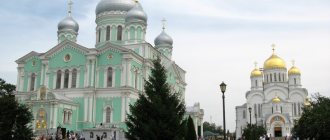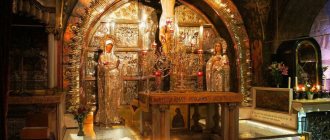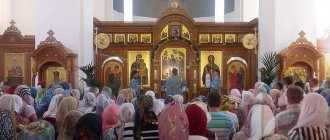In the Orthodox world, Greece is a blessed land. The holy Apostles and the Mother of God lived and preached here. Miracles took place here and the Christian faith was established in the hearts of people and in the foundation of the state.
St. Paul, bringing the light of the Gospel, traveled around almost the entire country and founded Christian communities in Athens, Thessaloniki, Corinth and Neapolis. John the Theologian preached in Ephesus and Patmos.
St. Mark and St. Barnabas converted the entire population of Cyprus to Christianity, and St. Andrew was crucified on the cross in Patras.
The Mother of God blessed the holy peninsula of Athos. It later became an autonomous monastic state.
Emperor Constantine the Great adopted Christianity and protected believers from persecution, and Theodosius I established Christianity at the state level.
All these events left their mark on the history of Greece and were reflected in its culture, traditions and architectural style. Today there are countless temples in this country, where pilgrims flock from all over the world. People believe that by touching the shrine, they will feel divine power and will certainly get what they want. Some are consolation, some are healing, and some are the answer to a burning question about the meaning of life.
Orthodox shrines of Athens
Cathedral of the Annunciation of the Blessed Virgin Mary
This cathedral is a symbol of the revival of Greek culture and religion after the Ottoman occupation. Construction started at the beginning of 1842, on the day of the Nativity of Christ. The marble for finishing the temple was collected from 72 destroyed Athenian shrines. Here lie the bodies of two saints, Philotheus and Gregory V, killed by the Turks.
Church of St. Catherine
On the site of the current Orthodox church, services and sacrifices to the goddess Artemis were once performed. At the beginning of the 11th century, the temple of St. Catherine was built on the site of the ruins of the ancient sanctuary. The Ecumenical Patriarch Athenagoras once served as a deacon within the walls of the church.
Church of the Transfiguration of the Lord
This is a Byzantine temple, built at the foot of the Acropolis in the second half of the 11th century. Nearby, on the hill of the Acropolis, there is a small chapel dedicated to Paraskeva of Rome. They say that the Greek hero, military leader Odysseus Androutsos, who died in the struggle for Greek independence, is buried near the temple.
Church of Saints Theodore
The ancient church was built back in 1065. Severely damaged during the Greek Revolution, it was restored and re-painted in the first half of the 19th century.
Temple of the Virgin Mary Kapnikarea
This is one of the oldest churches in Athens, built back in 1050 in the Byzantine style. Located in the center of the city. There is a version that the temple was built on the site of a pagan shrine dedicated to the goddess of wisdom Athena.
House of the Virgin Mary in Ephesus
Rest and pilgrimage
Visiting holy places while on holiday in Greece seems quite natural. If you consider yourself a religious person, then you may be interested in pilgrimage programs organized by an Orthodox pilgrim. But we must understand that pilgrimage is not tourism. The main goal of a pilgrim is not sightseeing, but touching shrines and participating in divine services. A pilgrimage as part of an organized group, which is necessarily accompanied by a guide with a theological education and a priest, will make the trip eventful and will allow you not to be distracted by solving organizational issues.
Greece is a country rich in history and culture; it is impossible to explore all its treasures in one trip. Return to Greece again - and it will definitely reveal its new secrets to you.
The material was prepared based on the results of a press tour organized by
Orthodox shrines of Thessaloniki
Basilica of the Great Martyr Demetrius
It is traditionally believed that the patron saint of Thessaloniki is Demetrius of Thessaloniki. The saint was born in this city in the second century, secretly baptized by his parents in infancy. Despite the persecution of the pagans, Demetrius was devoted to faith in Christ until the end of his days.
As an adult, he disobeyed the king and, instead of exterminating Christians, actively preached and supported believers. He was executed in 305. Christians buried the body of the Holy Great Martyr, and a church was erected over the grave in the fourth century.
Today the relics of the saint are in the temple, in a silver sarcophagus.
Saint Sophia
The temple was built in the 5th century. 100 years later, the shrine was destroyed as a result of a powerful earthquake. The modern building is the result of restoration work carried out in the 7th century.
Hagia Sophia in Thessaloniki is included in the UNESCO World Heritage List.
Catacombs of John the Baptist
Not far from the Church of Hagia Sophia there is the Church of St. John the Baptist. But not simple, but with underground passages! Right in the temple there are steps leading to the dungeon.
It is not known why these catacombs were built, but believers from all over the world come here to visit the holy place, see ancient icons, drink healing holy water and simply touch one of Thessaloniki’s secrets.
Place of the first sermons of the Apostle Paul
Saint Paul arrived in Thessaloniki in 49. Here he communicated with the clergy of the Synagogue, interpreted the meaning of the Holy Scriptures, emphasizing the Old Testament prophecy about the coming of the Messiah and his martyrdom for the sins of mankind.
Some people, including influential personalities, were imbued with the Saint’s stories and believed in Christ. But not everyone liked these sermons, and over time, riots began in the city.
Paul left Thessaloniki hastily, at night. Along the way, he drank from a source, next to which the Vlatadon Monastery was later built. The water in this place was called “Holy Water of the Apostle Paul,” and today the Church of St. Paul stands on this site.
The pilgrimage to Meteora is described in this article:
Meteora in Greece - monasteries near the bluest sky
Read about Athos here:
Halkidiki Peninsula: resorts, nature, climate, beaches, attractions
Hierarchy of the Greek Orthodox Church
In the Greek Church, the spiritual hierarchical chain differs from that usual in the Russian Orthodox Church and looks like this:
Patriarch - archbishop - metropolitan - bishop.
The Archbishop of Athens and All Greece (Αρχιεπίσκοπος Αθηνών και πάσης Ελλάδος) is the head of the Holy Synod. Elected on the basis of the provisions of the Constitutional Charter of the Greek Church of 1977 by the Holy Synod. The number of candidates for election includes all current Greek metropolitans - diocesan bishops. After five days after the election, the President of Greece must issue a decree recognizing him, and then the rite of enthronement is performed.
The Holy Synod of Hierarchs (Ιερά Σύνοδο της Ιεραρχίας) is considered the highest authority in the Greek Church. The Holy Synod includes all diocesan bishops who have the rank of metropolitan and are appointed by the government of the republic. For issues related to church-wide governance of an everyday nature, the Permanent Holy Synod (Διαρκής Ιερά Σύνοδος) was specially created, which includes the Archbishop and twelve metropolitans.
The Greek Orthodox Church includes: 81 dioceses, 30 of which are nominally under the jurisdiction of the Patriarchate of Constantinople. The dioceses of the island of Crete, the Dodecanese archipelago and the monastic republic of Athos directly fall under the jurisdiction of the Patriarch of Constantinople, and therefore are not considered part of the Greek Church.
Patras
It is known that the last years of his earthly journey, the Apostle Andrew the First-Called lived in Patras. Here he preached, healed the sick and raised the dead. The ruler did not like the spread of Christianity and soon he ordered the execution of the saint by crucifixion.
The apostle was executed not on a cross like Jesus Christ, but on a beveled one. And his arms and legs were not nailed, but tied. The execution lasted two days. All this time he preached and consoled his disciples. When the saint died, the cross began to shine, and at the site of the crucifixion a spring began to gush.
Today in Patras there is the largest cathedral in Greece, built in honor of St. Andrew the First-Called.
Religious holidays
The Greek (or Greek) Orthodox Church unites 81 dioceses and includes 200 monasteries.
It is called autocephalous, that is, it is not subordinate to anyone.
Officially, church and state are separated, but the church tradition is present in all areas of Greek life.
For schoolchildren, special courses are provided on religious issues; every day in any educational institution (school or university) must begin with a prayer read by teachers and students.
Priests actively participate in public life and are present at almost all celebrations.
The Church is influential in relation to state institutions. Political decisions always receive the approval or disapproval of the Orthodox hierarchs. And no one opposes such cooperation.
The main calendar of public holidays includes many religious ceremonial dates:
- January 6 – Epiphany (in Greek Ta Fota, which translates as lights)
- Lent is preceded by the Greek Maslenitsa (Apokries), accompanied by carnivals.
- Easter is considered the most important celebration. It is called lambri, that is, light.
On this day, believers light candles, with which they go out into the streets and squares, the roar of fireworks and the ringing of bells are heard, spreading the joyful news of the Resurrection of Christ.
A unique atmosphere covers the entire country. Preparations for the holiday begin a week in advance. On Thursday, many families come to church, bringing bouquets of flowers.
On Friday, epitaphios - processions with a decorated Shroud - take place throughout the cities. After the Easter service, they eat magiritsu, and in the morning it is customary to roll colored eggs on the surface of the table. Whoever survives will have a good year ahead.
- The holiday of the Assumption of the Virgin Mary is called summer Easter or Kimisi tis Fiotoku; no one works on this day.
- The Greeks venerate St. Nicholas by organizing processions to the sea with prayers on December 6th.
- The Nativity of Christ is celebrated on December 25, on this day it is customary to decorate the house and serve cabbage rolls on the table, as a symbol of Christ wrapped in swaddling clothes.
Every Greek family attaches special importance to the celebration of the sacraments and Sunday services, which are attended by everyone together.
Orthodox shrines of Greece on the islands
Rhodes
They say that wishes come true in Rhodes. One has only to find the Panormitis Monastery and turn with true faith to the icon of the Archangel Michael. Then write your wish, seal it in a bottle and throw it into the sea. Whether this is true or not, the monastery is definitely worth a visit. It was founded back in the 15th century. Today, a two-meter miraculous icon of the Archangel Michael, healing from diseases, is kept here.
There is another Orthodox shrine on the island, to which childless women from all over the world come in the hope of conceiving a child. This is the monastery of Our Lady of Tsambiki. The miraculous icon is kept here. Read more about this attraction in the article:
Rhodes Island: beaches, attractions, photos
Corfu
In the 3rd century, Saint Spyridon lived in Greece. He devoted his entire life to serving God and people. He was a meek and humble person, steadfastly enduring all hardships and hardships. For this, the Lord rewarded him with the gift of clairvoyance and miracle-working. Many miraculous healings and manifestations of God's mercy occurred thanks to Spyridon.
Neither the soul nor the body of the Saint is subject to death, which remained incorrupt even many centuries after his death. At first it was kept in Constantinople, but after the fall of the city, the relics were moved to the island of Corfu. Local residents built the Cathedral of St. Spyridon and prayed to the heavenly patron for all their needs.
There is a legend that when the Ottomans approached the island, a terrible storm arose, which did not allow the enemies to approach. Since then, the people of Corfu have considered Spyridon their patron. And for good reason. After all, this is the only island of Greece that has never been under Turkish rule.
Orthodox shrines of Greece in Crete
Did you know that there are thousands of islands in the Mediterranean Sea! So Crete is the fifth largest and largest in Greece. The huge island has always been at the epicenter of events. Christianity came here back in the first century. Titus, a disciple of the Apostle Paul, preached here and founded nine dioceses on the island. The honorable head of the Saint is still in Crete.
And in Crete there is a miraculous tree depicted on the icon of the Blessed Virgin Mary in the monastery of Panagia Paliani. It began to sprout, covering the image of the Virgin Mary in its branches.
There are more than 700 churches in Crete!
The island of Crete - a piece of paradise in Greece
To the Belt of the Virgin Mary
Many remember how in 2011 a Christian relic was brought to Moscow - the Belt of the Blessed Virgin Mary, kept in the Vatopedi monastery on Mount Athos.
Having not left Mount Athos for 200 years, the Belt of the Virgin Mary traveled through 14 Russian cities. In Moscow, the Belt was exhibited in the Cathedral of Christ the Savior for several days, and all this time the flow of people did not end - hours-long queues in the cold did not frighten those eager to venerate the shrine. More than 3 million Russians were able to bow to the Belt. The Belt of the Virgin Mary is believed to help women suffering from infertility. Relics kept in the monasteries of Athos are usually not accessible to women, but the Belt of the Virgin Mary is brought once a week to the courtyard of the Vatopedi monastery in Porto Lagos, to one of the temples built on the islands of Lake Vistonida. If you come here as part of an organized pilgrimage excursion from, then after the prayer service you will be able to venerate the Belt, receive the blessing of the priest and the consecrated belt. Tours here are usually accompanied by a priest, who talks about the history of the metochion, icons and relics kept here.
Greek holy places
Connoisseurs of Ancient Greece come to the country to see museum exhibitions and the famous Parthenon; tourists choose the beaches to take a break from the hustle and bustle and soak up the sun.
Pilgrims strive to get in touch with those places from where Orthodoxy came to Russian soil, to find solitude and make a prayer request.
Greek church ministers are loyal to all parishioners: both those who are strengthened in faith and those who take their first steps. They are always friendly and welcoming.
In temples there are more relaxed rules: you are allowed to sit, special chairs are installed for this, and women are allowed to appear in trousers and without a headscarf.
At the same time, a dress that is too loose will be considered disrespectful. The Greeks do not prioritize external things; for them, the most important thing is the internal power of faith and prayer.
